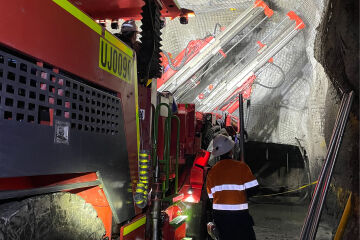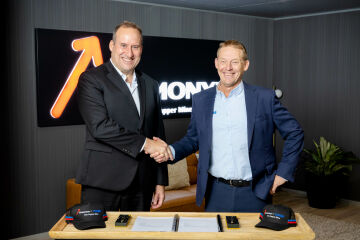waktu baca minimal
Data science powers operational gains
Across a variety of industries that range from banking to retail, data science is being used to solve business problems and drive better decision making.
For mining, the potential operational gains are enormous, a fact that Thiess’ General Manager Innovation and Technology Mischa Traynor knows only too well.
Referencing a McKinsey & Company management report at IMARC (International Mining and Resource Conference) on Wednesday 30 October, it was the lead-in to her presentation outlining Thiess’ data science journey and the gains made in anticipating fleet maintenance requirements.
“McKinsey’s 2015 report on digitisation said that by applying digital innovation to the management of mine operations, there could be a $250 billion annual economic impact for our industry,” Mischa explained.
“We wanted to know whether there was a way we could use our data science smarts to capture some of that economic benefit so we could deliver lasting value for our clients."
Mischa said that by thinking big and starting small, inroads could be made without a big budget or large data science team.
“We had some challenges to overcome first, which included finding a way to engineer the data effectively and securely, delivering an experience that was user centred, and baselining the value and return to realise benefits.
“Our approach was then one of internal partnership, and investing in a data engineering foundation that was relatively cheap, secure and a solid platform from which to scale..
“With this in place, we could then start to build a comprehensive view of our assets and their health, and we developed a solution known as the PCRS - Plant Conditioning Reporting Solution.
“In the PCRS, we codified how our most experienced Asset subject matter experts evaluate asset health - by adding Thiess customised thresholds, considering the individual asset, its history, operating conditions; and applying their implicit knowledge of Thiess assets.
“Our first PCRS was trialled in December 2017 and it’s now delivered at scale,” Mischa said.
Every morning at 18 sites around the world, maintenance teams start their day with the PCRS. They receive key insights into the engine, transmission and systems such as struts and breaks, as well as insights into operator actions that might have implications for asset health.
“Thanks to the PCRS, our teams can go informed to their daily meeting to work with operations to resolve issues that may affect overall mine performance,” Mischa said.
“What the PCRS gives us is a better opportunity for the Asset Reliability team and people onsite to identify the early signs of failure for PCRS monitored parts to then take targeted action,” Mischa said.
“Can you imagine how much quicker we could all derive value from data science in our industry if we had a collaborative community to face these challenges together?
“Our data science team at Thiess would love to be a part of that community and this is an open invitation to connect.”
IMARC was held from October 29 – 31 at the Melbourne Convention and Exhibition Centre and is one of the largest events of its kind in Australia.
To reach Thiess’ data scientist team, email communication@thiess.com.



